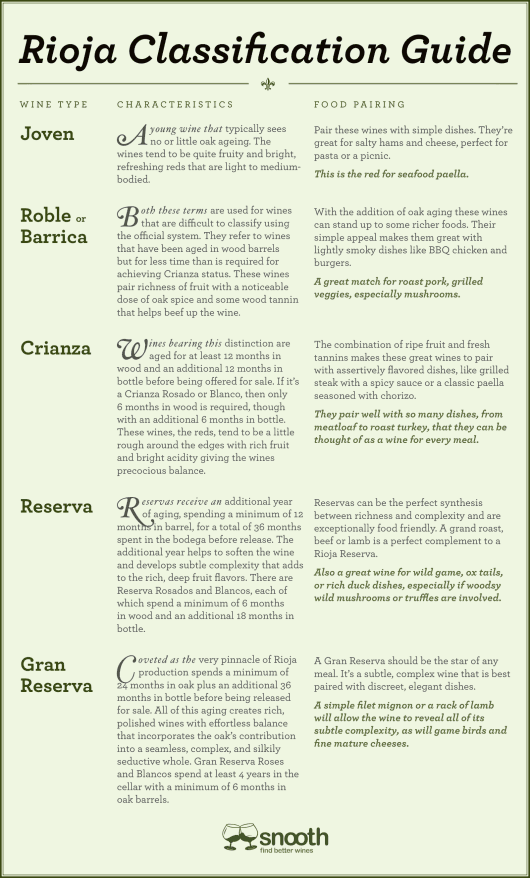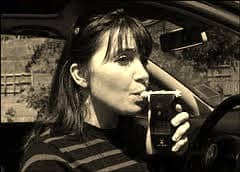Below is a really handy guide to how Spanish wines are classified, in terms of the minimum length of time they’ve spent in the barrel/bottle. Since terms such as Crianza and Reserva will frequently appear on bottles of red Rioja, but are infrequently explained, it’s useful to remember their definitions!
I have a simple mantra I learnt many years ago in order to memorize the length of time red Rioja’s are aged for. It is simply: 1&1, 1&2, 2&3.
The first number is the minimum amount of time a wine spends in the barrel, and the second number is the minimum length of time it spends in the bottle. Therefore:
Crianza = 1 year in the barrel, 1 year in the bottle.
Reserva = 1 year in the barrel, 2 years in the bottle
Gran Reserva = 2 years in the barrel, 3 years in the bottle
This chart, put together by the nice people at Snooth, explains in a little-more detail:


Mark Middlebrook
This isn’t quite right. The DOCa rules are stated in terms of: (1)
minimum time in bottle and (2) minimum total aging time (barrel +
bottle). There’s no specific minimum aging time in bottle alone. So for
example, a Tinto Crianza must be aged at least 12 months in barrel and
at least 24 months total in barrel plus bottle. There’s no requirement
that it be aged 12 months in bottle; in theory a producer could age a
Crianza for 18 months in barrel and 6 months in bottle. (Whether that
would be a good idea is a different question!)
See Chapter IV here:
http://us.riojawine.com/en/36-legislation.html
Kris Chislett
You are indeed correct! I guess I should have pointed out that, as far as the time in bottle goes, the rules are a more like guidelines. My little method to remember the various levels isn’t the law, but more the widespread practice (at least according to Jancis Robinson – Purple Pages).